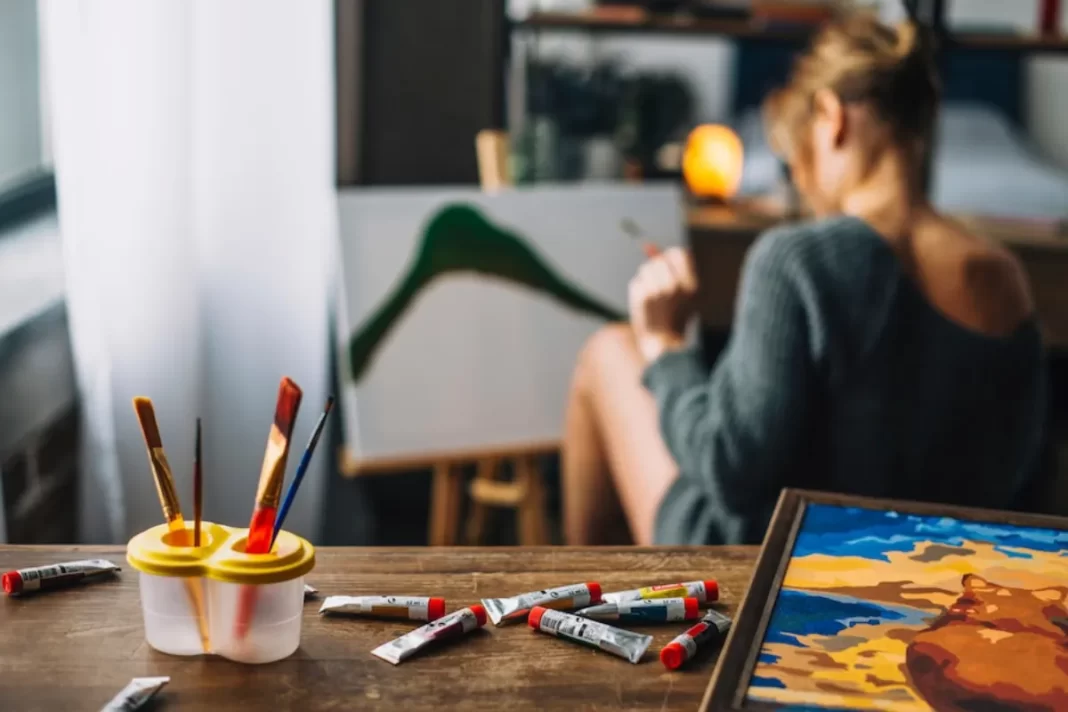In the world of colorful animal prints, where every stroke contributes to the creation of a masterpiece, understanding the techniques of painting becomes paramount. Whether you’re an aspiring artist or an art enthusiast, delving into the realm of painting techniques can deepen your appreciation for the art form and enhance your skills. This article aims to dissect the intricacies of painting techniques, from basic principles to advanced methods, and ultimately, the path to mastering this timeless craft.
Table of Contents
Understanding Basic Painting Techniques
Brushstrokes: At the core of painting lies the brushstroke, the fundamental building block of artistic expression. A brushstroke isn’t just a mark on the canvas; it’s a manifestation of the artist’s emotions, thoughts, and intentions. From the delicate wisps of a watercolour wash to the bold, impulsive strokes of a palette knife, each brushstroke carries its own significance, contributing to the overall narrative of the artwork.
The art of brushwork is multifaceted, encompassing various techniques and approaches. Some artists prefer to use long, sweeping strokes to create fluid, expressive lines, while others opt for short, controlled movements for intricate details. The choice of brush—whether round, flat, or filbert—also influences the texture and character of the brushstroke, allowing artists to achieve a diverse range of effects.
Color Mixing: The palette serves as the artist’s playground, where colors blend and merge to form infinite possibilities. Understanding color theory and the principles of mixing primary hues to create secondary and tertiary shades is essential for achieving harmony and balance in your artwork.
Color mixing is both a science and an art, requiring a keen understanding of color properties such as hue, saturation, and value. By experimenting with different color combinations, artists can evoke different moods and atmospheres, from the vibrant warmth of a sunset to the serene coolness of a moonlit night.
Composition: Beyond individual brushstrokes and color choices, the composition encompasses the arrangement of elements within the painting. A well-composed artwork guides the viewer’s eye, leading them on a visual journey through the canvas. Techniques such as the rule of thirds, leading lines, and focal points play pivotal roles in crafting compelling compositions that resonate with the audience.
Composition is about more than just placement; it’s about storytelling. Every element within the frame—whether it’s a figure, object, or landscape—contributes to the narrative of the artwork. By carefully considering the placement and relationship of these elements, artists can create dynamic compositions that engage and captivate the viewer.
Exploring Advanced Painting Techniques
Glazing: Glazing involves applying thin layers of translucent paint over dried layers of color, imbuing the artwork with depth and luminosity. This technique allows for subtle color variations and gradual transitions, enhancing realism and atmospheric effects. Through careful layering and blending, artists can achieve rich, nuanced textures that captivate the beholder.
Glazing is a versatile technique that can be used to create a wide range of effects, from subtle color shifts to dramatic chiaroscuro. By varying the opacity and viscosity of the glaze, artists can control the intensity and saturation of the colors, allowing for greater expressiveness and emotional impact.
Impasto: In contrast to glazing, impasto entails applying thick, textured layers of paint onto the canvas, creating tangible relief and three-dimensional effects. By manipulating the viscosity of the paint and wielding palette knives or brushes with gusto, artists can sculpt impasto surfaces that invite tactile exploration.
Impasto is more than just a technique; it’s a tactile experience. The thick, luscious strokes of impasto paint convey a sense of energy and vitality, capturing the essence of the artist’s physical presence. As the light dances across the textured surface, the painting comes to life, inviting the viewer to immerse themselves in its rich, tactile beauty.
Mastering Painting Techniques
Practice and Patience: Like any craft, mastering painting techniques requires dedication and perseverance. Regular practice hones your skills, strengthens your artistic intuition, and expands your repertoire of techniques. Embrace the journey of growth and discovery, acknowledging that each brushstroke brings you one step closer to mastery.
Studying Masterpieces:Drawing inspiration from the works of renowned artists offers invaluable insights into painting techniques and artistic expression. Analyze masterpieces with a discerning eye, deconstructing their composition, brushwork, and use of color. Emulate aspects that resonate with your artistic vision while infusing your unique voice into the creative process.
Seeking Feedback:Constructive criticism serves as a catalyst for improvement, providing fresh perspectives and guiding you towards refinement. Surround yourself with a supportive community of fellow artists and mentors who offer constructive feedback and encouragement. Embrace critique as an opportunity for growth rather than a reflection of inadequacy, recognizing that each critique propels you towards artistic excellence.
Conclusion
In the vibrant tapestry of artistic expression, painting techniques serve as the threads that weave together masterpieces of unparalleled beauty and complexity. By understanding the principles of brushwork, color theory, and composition, aspiring artists can embark on a journey of creative exploration and self-discovery. Through experimentation with advanced techniques such as glazing, impasto, and sgraffito, artists push the boundaries of traditional painting and forge new paths of innovation. With practice, patience, and a thirst for knowledge, aspiring artists can ascend from mere brushstrokes to timeless masterpieces that resonate across generations.



